Currant is considered the most popular berry in the gardens, which can be represented by a variety of species: black currant, red and white currant. It is these varieties of this culture that the gardeners are most often growing due to the extraordinary utility and aroma of their berries. It seems that the genus of currant has long been studied along and across. However, there is one form among them, which is still considered to be a wonder.
It is golden currant, landing and care for which is not much different from other varieties. Bundles of golden currant not so often can be found in the gardens of gardeners, some of whom they simply have not even heard of this wonderful berroda. Although it deserves maximum attention due to its bright appearance, excellent unpretentiousness and pleasant taste.
In this article, consider the features and description of gold currant, as well as the characteristics of the most popular varieties of this species. Note the most important moments of planting and care for this beautiful berry.
Features and Description Golden Currant
Golden currant, like another 150 different types of this culture, are leaf falling berry shrubs that belong to a large gooseberry family. The natural area of \u200b\u200bthe habitat of this type of currants is considered the territory of America and Canada, where scientists first began to cultivate it. In the north-west of America, Golden Currant was very widespread, here it can be found in almost every garden. This wonderful berry was delivered to the territory of Europe only at the beginning of the 18th century and first was used only as a decorative plant. For some time, it was grown in botanical gardens because of bright yellow flowers and beautiful foliage, but later Russian scientists close began to engage in the selection of this culture.
The main contribution to the spread of Golden Currant on the territory of Russia, Ukraine, Belarus and other countries invested the great scientist Michurin. It was he who brought the first grades who called the "Seedlings of the Crandal". This variety has become the basis for many others who have been bred later. Massively golden currants began to be used as a forest belt during drought, since then in many regions of Russia, you can meet the landing of this berry.
Description Golden Currant:
- Golden currant is a leaf falling weak shrub.
- The shrub is formed by flexible shoots, the height of which is about 2.5-3 m. These indicators are significantly higher than the types of ferrous and red currant us.
- Bush gold currant multi-section, of which the central stem gives most of the shoots. Fruit shoots of different ages.
- All shoots have a reddish tint, in some cases there are with a little omission.
- Golden currant grows rather quickly, the annual increase is approximately 30-40 cm.
- Active growth of this species is due to a rather powerful root system. Rhizome Golden Currant is sprawling horizontally, and in a depth can grow up to 2 m, however, the main mass of the roots is in the surface layer at a depth of 35-50 cm.
- Golden currant leaf is very similar to the foliage of the gooseberry. Green leaves, regular and complex, three-bladed and five-eyed with a wedge-shaped base. Because of the foliage, golden currants and yosh are often confused, although the currant of Yoshta is a hybrid, and a golden full-fledged view.
- The length of the leaves is approximately 5 cm, which is significantly less than other currant species.
- In the fall, the foliage is painted in yellow, then in the yellow-buggy, and at the end of September it becomes a carmine. For this golden currant is a valuable decorative plant.
- Golden currant was obtained from the color of the colors. In the spring, bright yellow flowers are blooming on a bush, which are collected in loose-shaped inflorescences.
- One flower can be up to 1.5 cm in diameter, and in one inflorence can simultaneously be from 5 to 15 flowers.
- In the form of flowers, tubular with small petals, in the center of which is a reddish or green whisk.
- Golden currant flowers have an excellent fragrance, so culture is a valuable honey.
- Golden currant blooms very wound, about mid-April, when there are no foliage on shoots.
- Delicious and useful berries ripen for 35-45 days. They have round or oblong shape. Important conditions for the fruiting of gold currant - the presence of this berry in the neighborhood of another bush.
- Berries can be different colors: yellow, lemon, reddish, terracotta, even golden currant black.
- This kind of currant gives a rich harvest, from one adult bush can be collected 7-8 kg of berries.
Variety of Golden Currant
To date, a large number of gold currant varieties are derived, which are distinguished by the timing of ripening, color of berries and taste. Consider the characteristics of the varieties of this culture in color of its berries.
Golden currant with black berries
- Grade golden currant "Venus". It is a compact and not very branching bush with extensive high escapes that are green. Venus currant leaves are complex three-blade, have a smooth and brilliant surface. It is considered an early variety, gives a good harvest in July. The berries on the bush ripens a lot, on average you can collect up to 12 kg. The berries of the medium size, weigh an average of 2-3.5 grams, are collected 5-7 pieces in the brushes. This variety is in black berries, sweet and juicy with small sourness. It is possible to grow a golden currant Venus in temperate regions, as it can withstand frosts to -40.
- CISHIMIC Sort. It is a high-yielding average variety. It grows in the form of compact, medium largest bushes. To increase the crop, you need to grow several bushes nearby. From one bush, you can collect up to 8 kg of berries, the size of which can reach 2 grams. Kishmishnya variety berries are very sweet and juicy, the pulp inside is golden.
- Grade Golden Currant "Isabella". Early variety, which is characterized by high yield. It grows in the form of a small underdeveloped bush, but despite the size gives a rather large harvest - approximately 6-7 kg from the bush. The mass of berries is approximately 1.5-3 grams. To taste, they are sweet and juicy with relevant sourness.
- Currant variety "Fatima". It is a rope variety, which gives a big harvest in mid-July. Berries are quite large, the weight of one is approximately 3-4 grams. To taste sweet and juicy with small sourness. The variety is characterized by a rich harvest - up to 200 centners with hectares.
Golden currant with yellow-orange berry
- Grade Golden Currant "Sunny". The very name of the variety speaks of a bright yellow color of berries. It is a mid-grade and well-woofed bush that brings a crop at the end of July. Golden Currant Leaves Three-blade or Pythadny, have a smooth leathery surface. Berries are round, bright yellow, weight of one about 2 grams. Berries are collected in small brushes in 10 pieces. To taste, the berries are sweet with sourness and fragrant aroma. From one bush, you can collect up to 4.5-5 kg \u200b\u200bof berries.
- Currant variety "Layisan". The currant bush of this variety is quite high. It is well-wired and compact. Well looks in a strain. The bloom of the variety lasts for 3 weeks and pleases the surrounding fragrant aroma. He is an excellent honey. A large number of berries ripen on one bush, the weight of one can be 1.5-2.7 grams. Golden currant berries Layisan are collected in the brush of 6-8 pieces. They have a beautiful amber, dark yellow, the taste of berries is sweet with pronounced acid. The variety is not distinguished by high frost resistance, shoots can be moderated at -30 degrees.
Golden currant with red berries
- Grade golden currant "SHFAK". It is a medium and compact bush, which can be in height to reach 2 meters. Listers small light green shade, purple at base. During flowering, the bush thick was covered with large golden flowers. Berries have a drop-shaped shape of a reddish-burgundy shade. The weight of one berry can be approximately 1.5-3.6 grams. To taste, the berries are sweet and juicy, the surface is covered with a small omission.
- The variety of currant "Otild". Refers to late varieties, full ripening berries comes in August. Berries of fairly large size, the weight of one can be about 2.5-3 grams. The color they are red-cherry, sweet with small acids.
In addition to the above, you can meet the grade gold currant with a rather unusual color of the berries - the grade "Chocolate" with brown berries, the variety "watermelon" with raspberry berries with small purple strokes, Malachite variety with green ripe berries.
Golden currant reproduction: the most common ways
Golden currants without problems can be breed independently. For this purpose, various methods are suitable - seed reproduction, reproduction with green and weathered cuttings, reproduction of golden currants with gods and root pig. Each method has various features and subtleties that need to be considered to invent a healthy bush, giving a rich yield of useful berries.
Golden currant reproduction with weathered cuttings
- Golden currant reproduction with cuttings, which have already been decorated, perhaps the most reliable and convenient way, as the planting material can always be found on an adult currant bush.
- First you need to prepare cuttings. For this, at the end of August or at the beginning, the shoots of last year with healthy kidneys are cut. The length of the cuttings should be 25-30 cm.
- It is possible to plant gold currant cutters in autumn and spring. However, if you chose the spring time for landing, then all the cuttings are needed to pre-prepare for storage. For this site, sections are sealed with paraffin and wrapped in wet paper, and then in polyethylene. Next place the bundle under the snow, where the cuttings are stored until the spring.
- In the spring, the cuttings are planted into the greenhouses or on the prepared beds in the open soil. For this, the lower part is cut at an angle of 45 degrees and plugged at an angle.
- The distance between landings shared should be approximately 15 cm.
- When landing, it is necessary to remember that it is necessary to plunge in such a way that only 2 kidneys remain on the surface.
- The beds necessarily need to pour and climb sawdust. After that, if you grow cuttings in the open soil, the landing must be closed with a film that can be removed only after the appearance of several leaves.
- Care of cuttings consists of regular and moderate irrigation, ventilation, loosening and feeding with a cow.
- Already by autumn you can get a 50 cm seedlings in a height with several shoots. The strongest can be transplanted to a permanent place, and weaker need to fool.
Golden currant reproduction with green cuttings
- Green cuttings need to root only in a greenhouse or use soil packages for this.
- First of all, the cuttings are not harvested from the tops of the shoots, but from the middle. At the same time, the length of the planting material should be approximately 8-10 cm and 2 leaf should be on them.
- Next, the cuttings are placed in water tank for 2 weeks, at the end of which the roots appear for approximately 1 cm long.
- After that, the cuttings are transplanted into packets filled with soil. The soil is pre-watered and made special holes so that excessive water leaves.
- Within 10 days, the cuttings water every 2 days so that the land in the packages is a liquid, like sour cream.
- After 10 days, watering gradually reduce.
- Thus, the cuttings contain at home until May. During this time, they will grow by about 50-60 cm.
- In May, the cuttings are removed from the packages and cheat on the beds a little deeper than they grow before.
Golden currant reproduction
- This method of reproduction of gold currant is considered the simplest and easy, which can be mastered even a novice gardener.
- In an adult fruiting currant bush, you need to choose a high escape to the ground.
- Escape must be two-year.
- Under the bush, the grooves need to dig about 10-12 cm deep into the depth. After that, het into them the shoots you choose and suck the ground in such a way that the top is 15-20 cm on the surface.
- Carefully fasten the groove with a special metal bracket and sprinkle soil.
- Care for grains lies in regular watering and removal of weeds.
- By the end of autumn, you can get a full-fledged golden currant seedling with a well-developed root system, which can be disconnected from the mother's bush and put on a permanent place.
Preparatory work before landing Golden Currant
It is possible to grow golden currants on your site and enjoy her decorative appearance and a pleasant flavor of berries. However, it is important for this to carry out the right and thorough preparatory work, which will be the key to obtaining a healthy and fruiting currant bush. First of all, you need to purchase strong and high-quality seedlings and pick up the optimal place on your site.
Stage 1. Selection of varieties and seedlings Golden currant
- The choice of a specific grade of golden currants depends on the place of residence, as it is important to take into account the frost resistance of the plant.
- If you decide to plant currant bush in the middle lane of Russia, then it is better to purchase varieties that can withstand frosts up to -40 degrees.
- If you land some bushes as a hedge, then take the varieties of mediterranean currant.
- Golden currant seedlings are needed only in specialized nurseries, agrofirms and garden centers, which are professionally engaged in breeding and selling plants. Golden currant is still quite exotic culture for our gardeners, so when buying in markets and with hands you can buy a completely different appearance of this berry.
- Purchase recommended seedlings aged 2-3 years.
- Before buying, carefully check the condition of seedlings. They must be healthy and strong, without dry and drowned roots, without signs of diseases and pests.
Stage 2. Selection of a place for landing Golden Currant
- According to the assurances of specialists, golden currants differs simply incredible unpretentiousness to the conditions of growth.
- It can grow in such places where other types of the berries will grow bad and give a small harvest.
- You can land the seedlings of golden currants in the open sun and in the shade, which the culture is absolutely not afraid.
- Young currant plants planted on flat terrain and on small slopes.
- You can choose a place. Where you need a live fence. Golden currant bushes perfectly cope with the role of fence.
- It feels great this culture in the city, since it is not afraid of strong gaspace.
Stage 3. Choice and soil preparation for landing Golden Currant
- As noted above, gold currant is considered a very unpretentious culture and can grow practically on any soil. It is suitable for clay, sandy, rocky and other soils.
- However, to improve growth and fruiting, it is best to select fertile soils.
- The only thing that this culture does not take place is high humidity and close grounding of groundwater. Therefore, pick a place on a small hill away from the accumulation of moisture.
- Usually, the landing site of golden currants is prepared for six months. For example, if you are planted in the spring, the soil must be prepared in the fall.
- To do this, carefully disappear by 40 cm. Pre-scatter wood ashes on the surface.
Golden Currant Landing Technology
- Landing golden currants, like any other, is carried out in autumn or spring.
- It is first necessary to prepare landing pits, the size of which should be as follows: 50 cm in width and length, 60 cm in depth.
- If you sit down several seedlings nearby, it is important to observe the acceptable distance between the landing pits. It must be about 1 meter.
- Pour a slide from fertile soil mixed with humid, wood ash and superfood.
- Before boarding a seedlings with an open root system, you need to dug in water for a couple of hours, and container plants spilled with water abundantly. To make it easier to extract them.
- Place the seedlings in the landing pits and suck the soil mixture so that the root neck is buried about 5 cm. This is necessary in order for the plant to have apparent roots.
- After planting, the seedlings need to rush and climb the peat.
- Gardeners recommend after landing be sure to trim shoots on seedlings, leaving only 3 to 5 kidneys.
- The first crop of delicious berries can be collected a year after landing.
Golden Currant Growing Agrotechnology: Secrets and Nuances of Care
Care for golden currants is practically no different from a similar process relative to other types of this berry.
- Watering. First year after landing, young plants need to wip every week. More adult bushes can be abundantly water only during the formation of fruits. More attentive and regular irrigation culture requires during drought. Only so you get a rich harvest of sweet berries.
- Loosening and mulching. In the spring and autumn, it is necessary to loosen Merarats. Also during the season, it is necessary to periodically mulch the rolling circle in the cookie. For this use peat or sawdust. In 5-6 years after the landing, the weeding can be excluded, since shrubs will grow strongly.
- Feeding To obtain a good harvest of berries, it is important in spring and autumn to make fertilizers. Many gardeners are recommended in the spring to make a solution of bird litter, and the autumn is added under each bush humid, wood ash and superphosphate. In the spring, nitrogen fertilizers can also be used.
- Pruning gold currant. Trimming shrubs is carried out in spring or autumn. At this time, it is necessary to cut all old, sick and damaged branches. Be sure to remove an extra pricing increase, leaving only powerful shoots. Rejuvenating trimming is carried out 12 years after landing.
- Diseases and pests. Golden currant diseases are practically not blocked. Exception if the culture care was broken. In this case, gray rot, rust, septoriasis can be manifested. For the prevention and pi detection of signs of illness, a borodio liquid plant can be treated. copper vigor. From pests most often damage the plant of the TLL, to deal with which it is possible with the help of special insecticides.
Stock Foto Golden currant
Golden currant is still new to our gardens, but gradually the popularity of this wonderful berry rises. Attach this culture on its site will not be difficult. But later it will give you rich yields of delicious and useful berries.



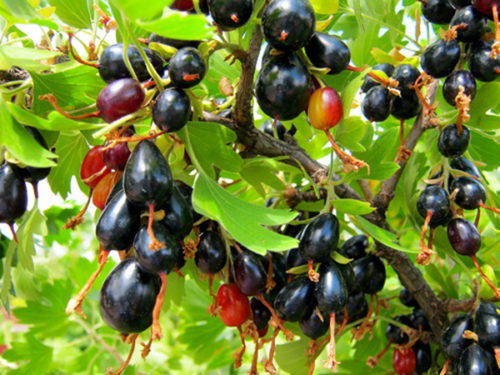
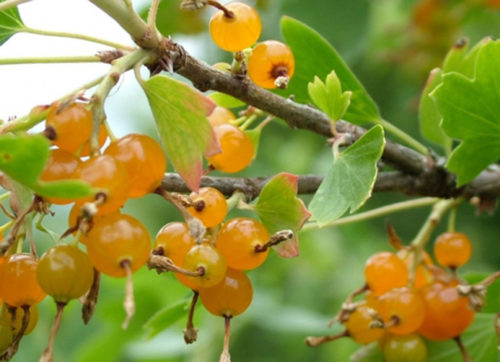
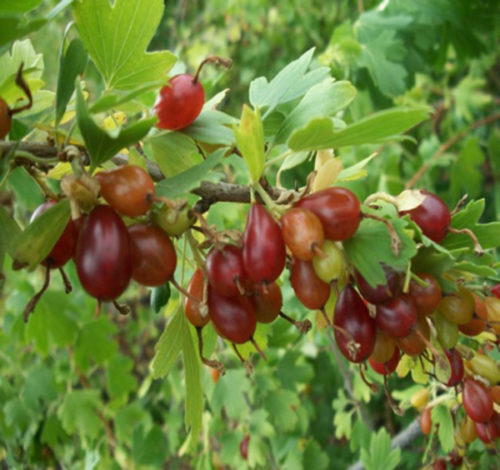
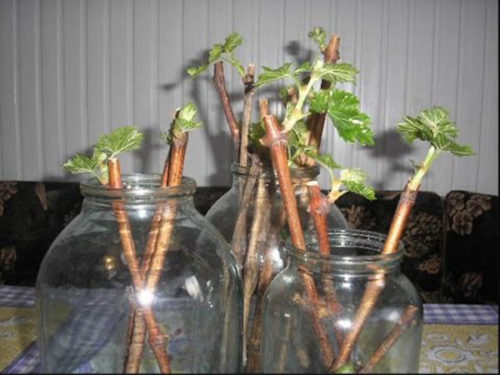
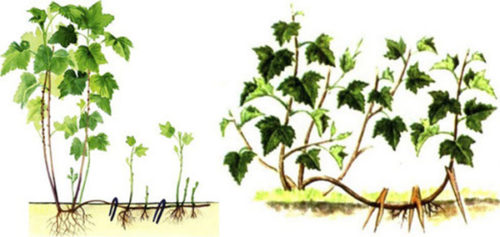
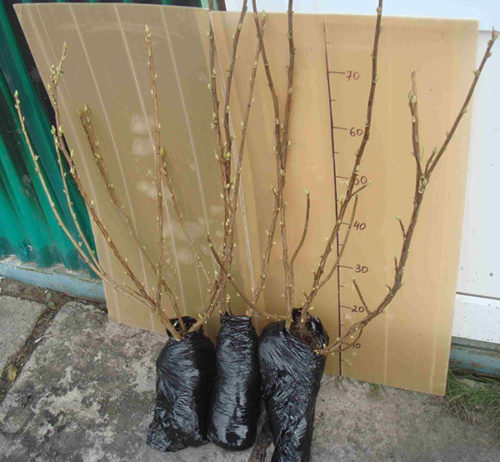
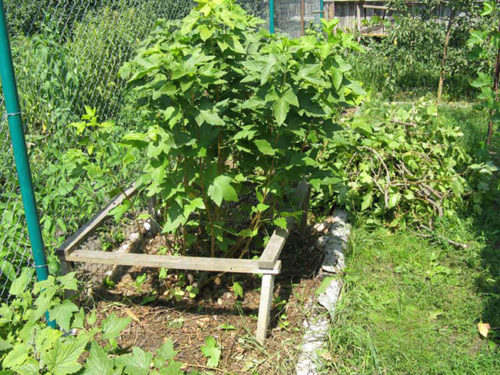
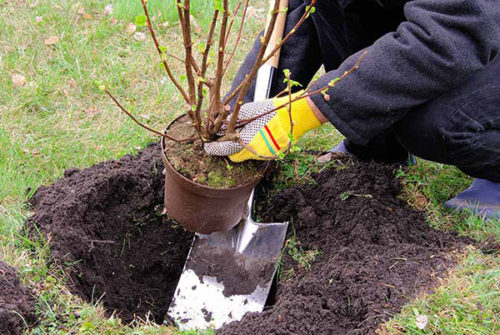
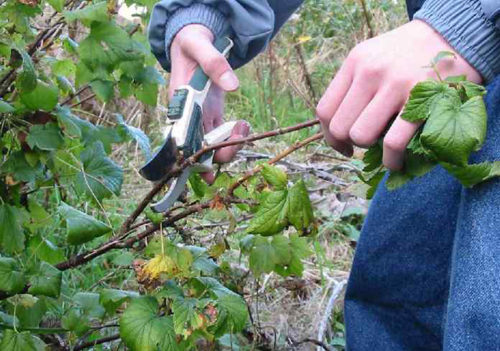
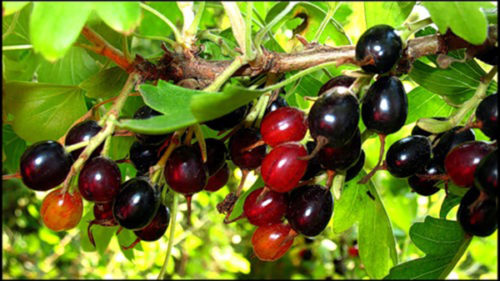
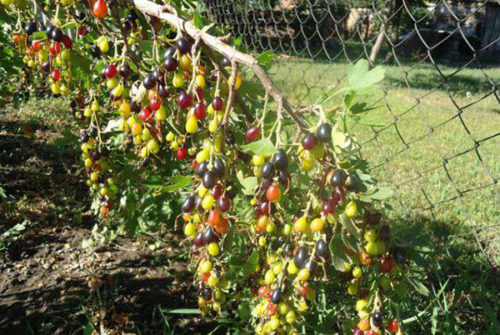
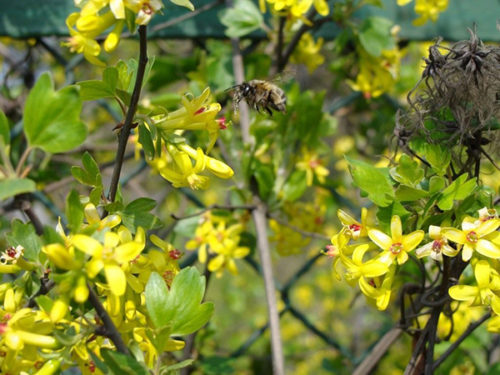
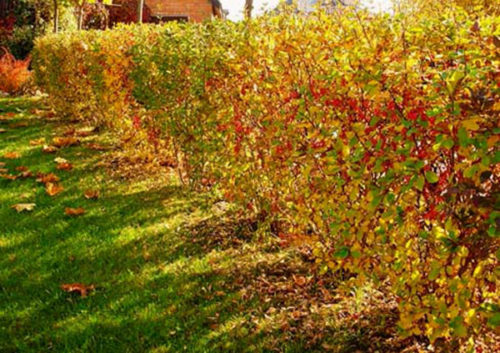
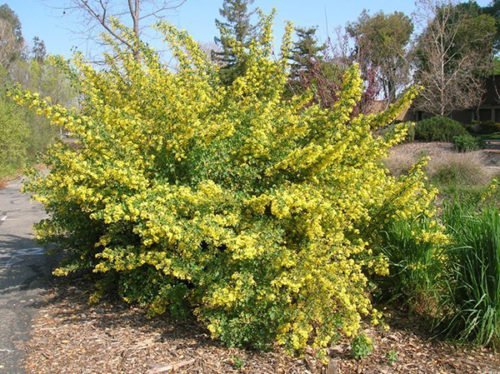












 Start a discussion ...
Start a discussion ...